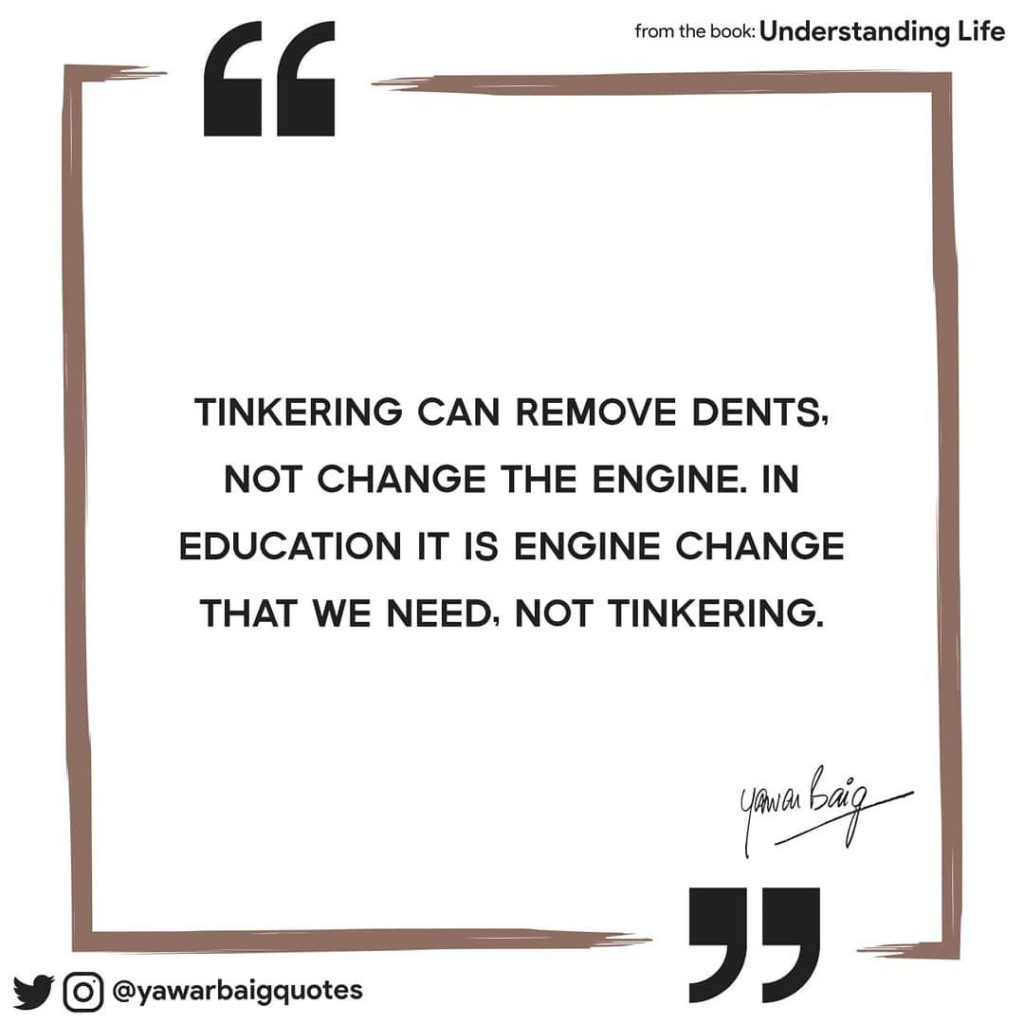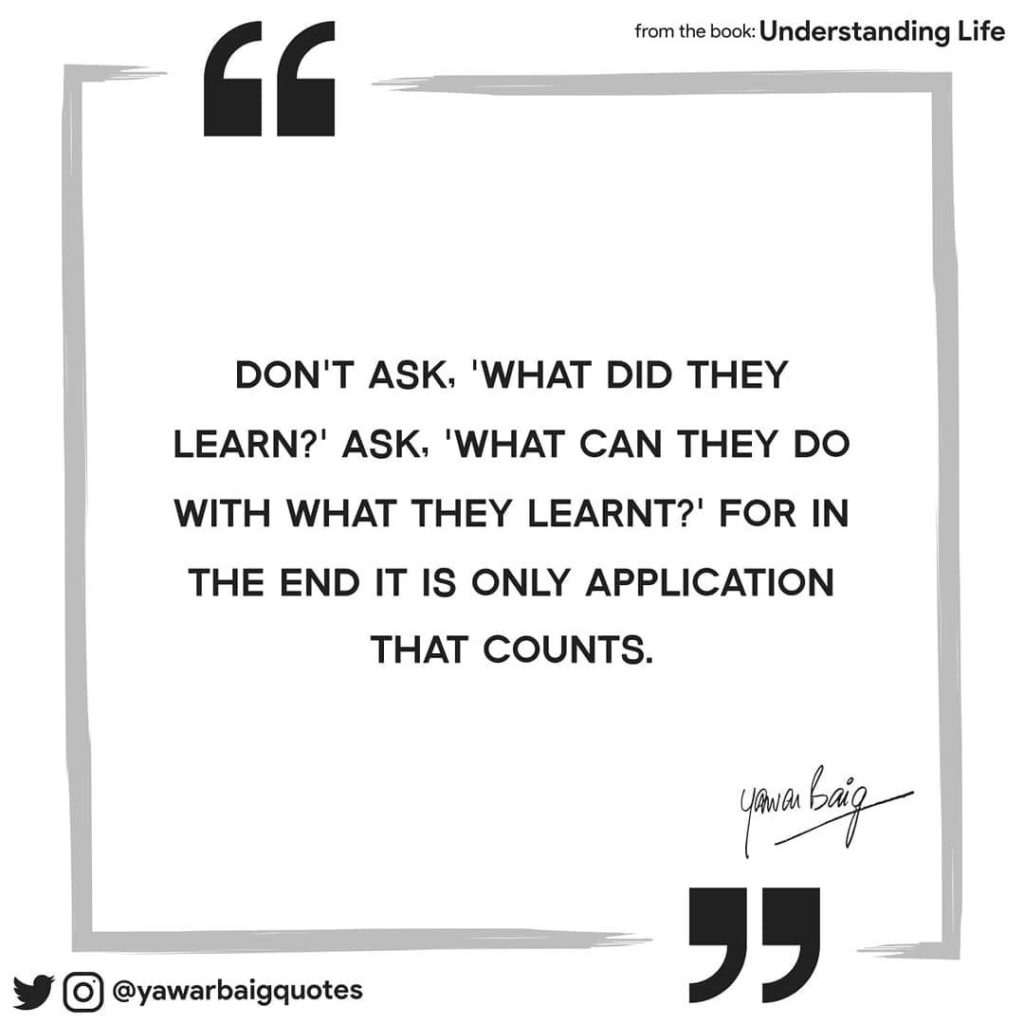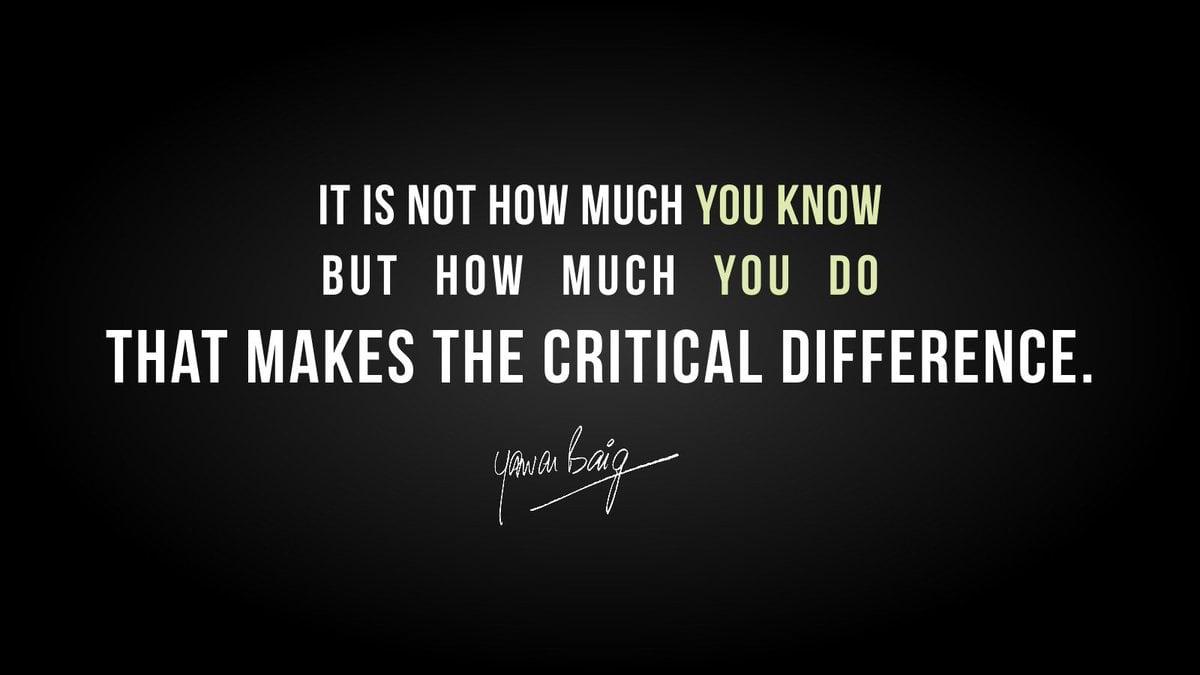“In order to change an existing paradigm, you do not struggle to try and change the problematic model. You create a new model and make the old one obsolete.”
~ R. Buckminster Fuller
Scope
The purpose of this article is to help the graduates of Madaaris to become relevant in modern society and to be able to provide positive leadership to their congregations.
I have tried to define the situation with Madrassa Education in India as I understand it and to propose a solution to the deficiencies and problems that it faces. That these deficiencies and problems are not necessarily recognized or likely to be accepted by those who run Madaaris is to be expected because the first reaction of the patient who is diagnosed with a terminal illness is denial. However, this ‘illness’ though terminal, if left unattended, is curable if addressed. The question is whether those who have the authority – Madrassa administrators and even more importantly, donors and sponsors – are willing to address it and implement the cure. It is my job to share my thoughts. With that, I rest my case before Allah. For I will not be asked, ‘What did you know?’ I will be asked, ‘What did you do?’ That is what you, my dear reader, will also be asked.

About the issues with the quality of education in our Madrassas in India (subcontinent), I believe we need to look at the syllabus which is based on the Dars-e-Nizami. Dars-e-Nizami or its derivatives are taught in thousands of Madaaris worldwide which draw inspiration, instruction or follow the principles and values of Darul Uloom Deoband, arguably the most respected Madrassa in the subcontinent. I have quoted from Darul Uloom Deoband’s site because Deoband is the bastion of this syllabus and methodology. You can see what they themselves say about what the student gains after eight years of full-time residential ‘education’. (bold type below is mine).
“Its founder was Mulla Nizamuddin Sahalvi (d. 1748), who was contemporary of Hazrat Shah Waliullah. The curriculum known as “Dars-e Nizami”, which is current today in all the Arabic schools, is a relic from him. Adding something more to the syllabi of the third period, Mulla Nizamuddin prepared a new syllabus. The great peculiarity of this syllabus is that more attention has been paid in it to the creation of depth of insight and power of reading in the student, and although immediately after the completion of this course proficiency is not acquired in any particular subject, this much ability is surely created that, through one’s own independent reading and labor, one may acquire proficiency in any subject of one’s liking. The standard of Hadith and Tafsir in this course too is not much high, and of literature there is included no book at all.
http://www.darululoom–deoband.com/english/sys_of_edu/index.htm
Mulla Nizamuddin created what came to be called Dars-e-Nizami in the 1730’s, more than a century before 1857 and the establishment of British rule in India. He created the syllabus to enable Madrassa graduates to get government jobs in the Moghul administration. Since he was from Lucknow where the influence of Iran was very strong, his course gave far more importance to Ilm Kalam, Greek philosophy, logic (Mantiq), Farsi and not to the Qur’an, Hadith and Seerah. What is amazing is the sincerity with which our Madrassa authorities still cling to this totally outdated syllabus ignoring all the changes in time, space, political situation, and realities of the modern world that have happened since the 1730’s. The result is that they are still producing graduates ideally suited to enter the service of a government that ceased to exist a century and a half ago.
I don’t think there is any doubt in the minds of anyone including those who graduate from Madaaris with at least some residual ability to think still intact, that there is a crying need for change. Not merely cosmetic or incremental change but a total transformation of the curriculum, syllabus, and teaching methodology to ensure that those who graduate from there can enter society with confidence.
The reason this is even more important is because according to the Justice Sachar Committee Report (2005) http://bit.ly/2fmNJoY there are two million students in Madaaris in India. That is less than 2% of the population of Indian Muslims but it is significant because of the amount of money that is spent voluntarily on it by the community which the same Report defines as being economically speaking, the weakest in the nation. Yet the Indian Muslim community spends a colossal INR 24 billion (2400 crores) annually on sponsoring Madrassa education. I doubt if there is any other community of Indians who can match this contribution to national development. My assumption that education is national development. I arrived at this figure by assuming a cost/student of INR 1000 per month per student. The actual cost is most likely to be double that or more as most Madaaris provide boarding, lodging and education, totally free. However, for our discussion the amount of INR 24 billion (2400 crores) is sufficient. It is my contention that anyone (person or group) that spends so much money must be concerned about the quality of the output for which the money is being spent. I believe that is where the problem starts because to the best of my knowledge there is no particular purpose or clear objective of Madrassa education.
No Madrassa teacher or director has ever been able to answer me clearly when I asked them to describe what their final product, the graduate of the Madrassa, was supposed to be or do apart from leading Salah and delivering the Khutba for Jumu’a. Educators teach what they have been mandated to teach according to the syllabus. Donors sponsor the education considering it to be a ‘good deed’ for which Allah will reward them. Students who come mostly from the poorest strata of Muslim society and their parents, have no voice at all in deciding what is taught, how it is taught or what the result is. The fact that the graduate is called A’alim is a bonus, and he exits with a sense of position though without any skills to lead his life in society and totally dependent for his livelihood on donations to the masjid or madrassa he gets employed in. My submission is that there is a need to be clear about the purpose of Islamic education and to bring Islamic education on par with secular education in terms of teaching curricula and methods. Teaching methodology in most Madaaris is totally outdated and completely free of all the latest developments in teaching technology and methods. To add insult to injury, Madrassa teachers and look down on modern teaching methods, child psychology, lesson planning, documentation, and technology. When technology is forced on them, it is politely parked in a corner and dusted out to show the donor who paid for it, when he visits the Madrassa. I recall with a smile and a tear when in one major Madrassa in India, I was taken to their Computer Lab. The door was padlocked. It was opened for me and the Nazim (Administrator) swept his hand in an arc and asked me, what I thought was required in their Computer Lab. I said to him that it needed a broom and dustpan more than anything else because everything was covered in inches of dust. I asked him when the students come to learn and what they learn. He looked confused and looked at his many minions who followed him around for an answer. One young one, not yet schooled in giving noncommittal diplomatic answers said, “Yahan ladkon ko aanay ki ijazat nahin hai. Yeh tho hamesha band rahta hai.” (Here students are not permitted to come. This is locked all the time). I realized that the computers had been bought to please some donor with no intention of every using them. But it was a good talking point for fund raising to say, “We have a computer lab in our Madrassa.”

Madrassa education in the Indian subcontinent is the only system in which teacher training is unheard of. So is understanding of child psychology, lesson plans, teacher assessment, standardized exams or any of the teaching aids that are commonplace in every other school. Just ask a normal Madrassa teacher about any of these things and you will see a look of bewilderment on his face. Yet there seems to be no concern in our community and no anguish except in my heart. No effort to change anything except from very few people who are so few that they will not register on any radar. Assuming that there is such a thing as a radar in the Muslim community.
In short Madrassa education as it is practiced, doesn’t prepare the student for anything in particular, doesn’t make him proficient in anything and so is in effect an exercise in futility. That this is the result of 6-8 years of so-called education on which a colossal amount is spent by the community which can least afford this luxury, shows how little we care about our own community and its most critical asset; the youth and education.
The present syllabus is totally inadequate both theologically and in a worldly sense. Add to that the fact that graduates come out with the title of A’alim, and an inflated sense of their own importance combined with an inferiority complex. Sounds crazy but it’s their reality. This happens when their Madrassa-inflated egos meet the real world and realize their inadequacy. So, they go into a shell because they’re helpless and don’t know how to handle it.
Quality is the outcome of the metric of measurement
This absence of quality is completely understandable in a system where you don’t need any accreditation or certification to start a Madrassa. There are no minimum standards of anything at all; infrastructure, teacher quality, teaching material or any of the normal standards that you would have to satisfy to be certified and permitted to start a basic elementary school. There are no metrics to measure anything in the Madrassa system, so how can you have quality which is the outcome of measurement? Teachers have no qualification to teach, nor do they or you feel the need for this. Students come from the poorest and therefore the least powerful or vocal section of society. Students and their parents have low or no aspirations and no voice at all to implement any change, even if they knew what they wanted to be changed. The curriculum has no benchmark to compare with any curriculum today, is not comparable to any other educational system and to top it all is given the patina and glow of the sacred and holy which is meant to throttle any change initiative in the cradle.
To close the loop from where I started, the biggest hurdle to change in the existing Madrassa education system is the fear that any mention of change inspires in those who own and run it. That is entirely understandable because for one thing; the Madaaris are the means of their own livelihood. For another, change in the way that is needed is not merely incremental, evolutionary, or even less, cosmetic but revolutionary, transformative, and metamorphic. What is needed is a completely new system. Resistance arises from the real fear in the teachers and Madrassa owners of becoming redundant and thereby losing their livelihood. This is a real fear because expecting current teachers to learn a completely new body of knowledge and teaching methodology is unrealistic. Add to it the fact that included in the re-learning is to learn two new languages, Arabic and English, and the water gets even murkier. That is why I began with Buckminster Fuller’s quote. What is needed is to create a new model which will be proof of concept to inspire change and give people the reassurance that success always does. I remind myself of two things: people with limited resources must be very clear and selective about where to spend them to get the maximum benefit. And one day we will be questioned about what we did or failed to do by the One who knows and sees all.
What must be done?

All change must begin with clarifying the goal. Madrassa educators must arrive at a consensus on the goal of Islamic education in today’s world. We need to articulate our vision for the training of Ulama. What do we expect them to achieve once they graduate? The goal of learning is something that is not even questioned in any other branch of education because it is clear from the beginning. You don’t need to ask someone running a medical college or a flying school or a Judo dojo or a dance academy, what they expect from the students who graduate. But with respect to our Madaaris and those who graduate from them and those who teach them, their purpose, their life goal, what they are aspiring to become and achieve are all enigmatic and mysterious. That is why there is low motivation which is sought to be countered by rote learning and brutal corporal punishment.
Another thing to be taken into consideration by those well-meaning souls running short courses for Ulama is the principle of lack of alignment between training and organization culture which is the reason 85% of corporate training worldwide, fails to be implemented. The reason is that the culture back home is not conducive to implementation. For example, one of the most frequently conducted courses worldwide is team building. But it doesn’t stick (which is why it is run so many times). The reason is that organization cultures and compensation structures support individual competition, not collaboration and teamwork. So, when our newly trained individual returns and wants to collaborate, the system ‘punishes’ him. After being punished a few times (depending on the level of his intelligence and idealism) he falls in line and discards his training because what he was taught doesn’t work in the organization. His old destructively competitive ways helped him to get ahead. The new collaboration training which was taught to him as being better for him and the organization, failed him and got him punished. How long do you imagine he would stick to it despite failure and punishment? No matter how much he enjoyed the course and thought he learned valuable lessons, he drops the training because it doesn’t work in his system. That is why I always advise my corporate clients, that if they are serious about encouraging teamwork, they must re-design their compensation structures to support teamwork and discourage individual competition. Alignment of desirable behavior to its reward is critical.
Take this example to the teaching methods in Madaaris; people succeed because they focus on memory. They deliberately discourage, even punish, critical thinking. The most powerful way to do this is to make everything sacred and therefore unquestionable. There is no difference in approach to the Word of Allah, the teachings of His Messenger (S) and the teachings of (especially and almost exclusively) the scholars of a particular Madhab. So, where is the question of questioning anything that was ruled by any of them when to do so would be to literally put your life and reputation on the line. “To question is not to deny” – is not something that our traditionalists believe in. Our way is to hear and obey, even though that is something that applies only to the Word and Orders of Allah alone. Raising humans to a semi-divine status resulting in hero worship is always injurious to reason.
We must therefore begin with defining the goal; the end result that we would like to achieve. Once that is clear and agreed upon, one can work on the curriculum, syllabus, course material (books etc.), testing, teaching methodology, teaching tools and technology, infrastructure, and teacher training.
One final matter which all aspiring instigators of change need to keep in mind is that all this needs serious capital investment. Less than what we spend for ostentatious weddings but still significant. Without that we can’t hope to create the infrastructure, teacher training, curriculum development, course-ware and myriad other things that are necessary to ensure that the new institutions can deliver the results we hope to achieve. This is also necessary to make Madaaris aspirational. To test if our Madaaris are aspirational (in case you have any doubts) ask one of your children if they would like to leave their school and join any Madrassa and you will have the answer. This must change. The image problem that Madaaris have reflects also on their graduates and explains the lack of respect that Madrassa graduates have in Muslim society.
The big question is, ‘How much longer do we want to continue with this?’ This question must be answered first and most importantly by those who fund Madrassas. It is they who must drive the change. It is they who will be questioned by Allah and recorded in history for what they did or failed to do. Change is the result of the actions of those who pay for it. It is time that we focused on what happens to our donations and seek to make that most beneficial for the community because it is only quality that pleases Allah.
What must happen? I have tried to list some broad changes that need to be introduced urgently if we are interested in ensuring that our money is spent in a beneficial manner to achieve our aims of serving the needs of Islam.
A Central Madrassa Board must be created to ensure the following:
- All Madrassa teachers must have a degree in education
- Corporal punishment to be banned and punishable if practiced
- Centralized curriculum, syllabus, and examination system.
- Curricula and syllabi to be redesigned to make them current, relevant, and effective
- Centralized management of funds by the Madrassa Board
- Transparency in all matters and merit must be the only consideration
I have not attempted to suggest a new curriculum and syllabus for Madaaris because before anything can be suggested it is essential for the institutions to feel the need. Currently they don’t. The fact that their graduates emerge in society, unfit and incapable of dealing with it, much less provide leadership, leaves them unmoved. Until that changes and until they feel the need to change, no change is possible.
What would be far more profitable is a grass roots project to create a teaching institution which teaches Islam, science, and social and political sciences in a holistic integrated manner with a focus on leadership development.
Ah! I am talking about the SBA of course. But then we land in the realm of dreams.

Assalamoalaikum Interesting read and agree with many of the points discussed.h experience in leadership, curriculum development, change management means that for many years I have had to challenge the status quo and try to explain to many Ulema including senior teachers that lecturing, facilitating and teaching are all completely different. No one wants to address this as kursiyism is rampant in our society. Most leaders of Madaris are not fit for purpose and if they were to be regulated for example here in the UK in my estimation over 98% would fail. Would love to discuss this further with you… Read more »
May be the easy solution is to show the Madris administrators that, you have developed and established a Madrasah, which serves of cause of Deen only. With respect best way is to lead by example. Please purchase a building, start a Madrasah and let others see your success.
I am sure you would agree there is nothing better than the above.
Ma salam
This article offers a compelling and insightful analysis of the current state of madrassa education in India, emphasising the urgent need for comprehensive reforms to align with contemporary societal needs. Shaykh Yawar’s thoughtful critique and proposed solutions provide a valuable framework for enhancing the relevance and effectiveness of madrassa curricula. Such discourse is essential for fostering positive change and empowering future generations.